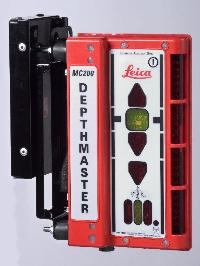Manufacturer of high-quality measuring tools
Laser detector for construction lasers
Machine receiver for rotating lasers
Together with a machine receiver, the rotating laser is also used to control an excavator bucket or dozer blade. The machine receiver is basically a large laser detector whose display is easy to read even from a distance. While a laser detector is held in the hand or mounted on a measuring stick during measurement, the machine receiver is mounted on the excavator bucket or dozer blade while the operator is sitting in the cab. The machine receiver must therefore be easy to read even from a distance.

Maschinenempfänger für Rotationslaser
Foto: Leica Geosystems |
|
![]()
|
|
![]()
|